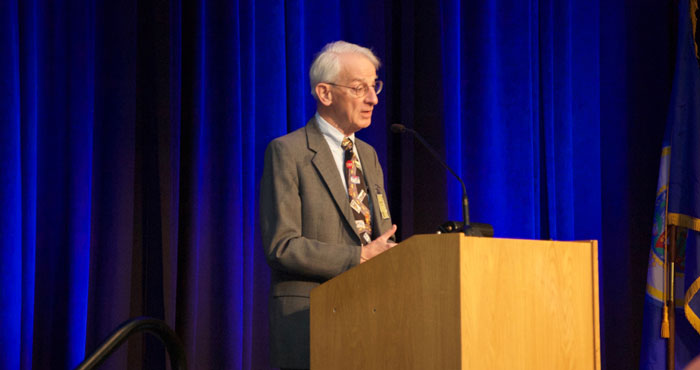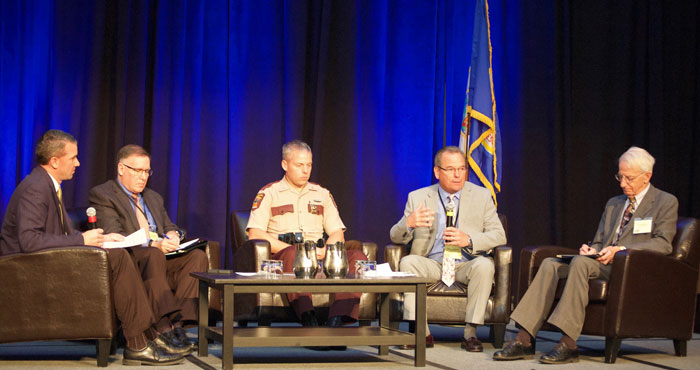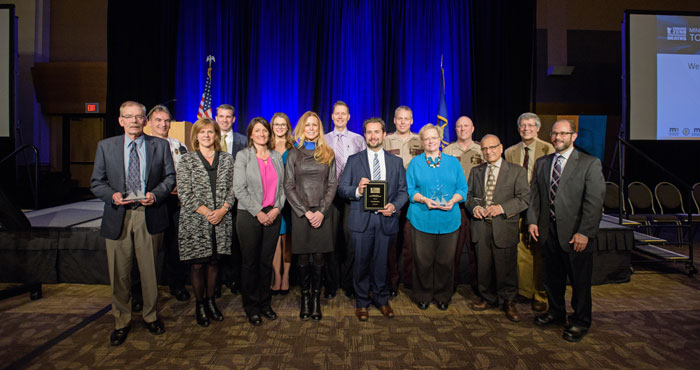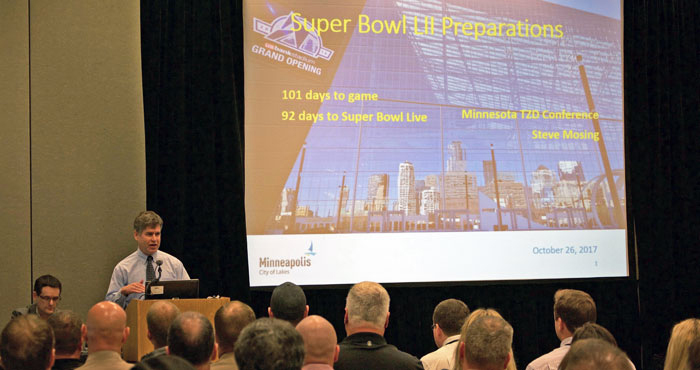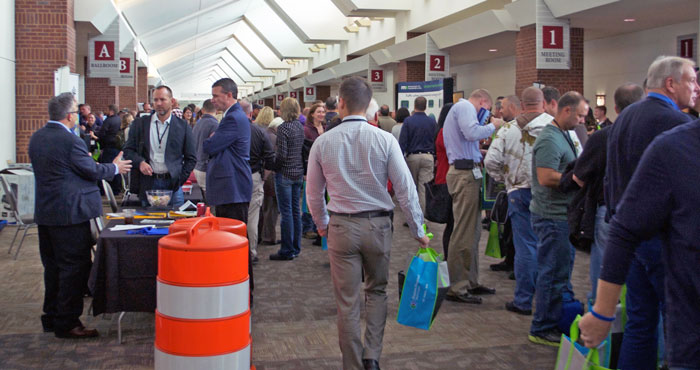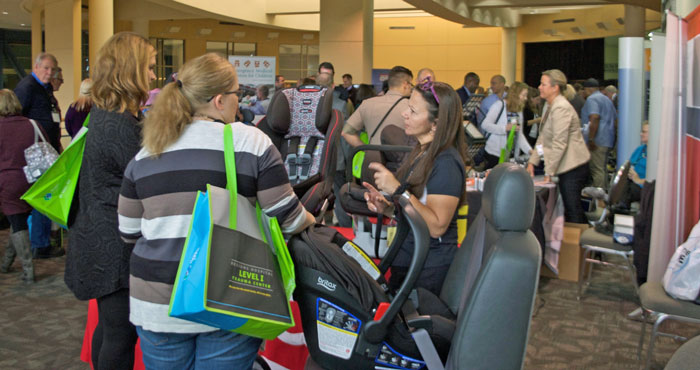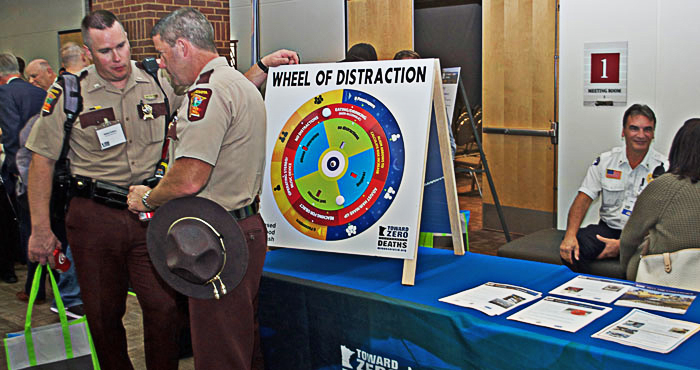- What is TZD?
- TZD Initiatives in MN
- Events
- News
- Resources
- Aggressive Driving
- Bicycling & Pedestrian Safety
- Child Passenger Safety
- Distracted Driving
- Education
- Emergency Medical & Trauma Services
- Enforcement
- Engineering
- Impaired Driving
- Intersection Safety
- Lane Departure
- Older Drivers
- Rail Crossing Safety
- Seat Belt Use
- Statistics
- Traffic Safety Legislation
- Videos
- Younger Drivers
2017 Toward Zero Deaths Conference
October 26-27, 2017
Saint Paul RiverCentre
Saint Paul, MN
Conference Materials
Presentations
Plenary Session: Autonomous Vehicles and Traffic Safety—Promises and Challenges
Autonomous vehicles—self-driving cars—will guarantee zero traffic deaths, right? Or will they? In this presentation, Jim Hedlund, principal at Highway Safety North, discussed traffic safety issues Minnesota must address as autonomous vehicles take to the road and interact with human drivers.
Plenary Session: Safeguarding Our “High”ways—Combatting Drugged Driving
Through the efforts of many groups and organizations, incredible progress has been made in addressing the challenges of drunk driving. But now, police officers and highway safety advocates have another challenge—the drugged driver. Nationwide, we are seeing increased incidents of people driving under the influence of drugs, including prescription drugs, illicit drugs, recreational or medical marijuana, or over-the-counter substances, turning our roadways into “high”ways.
In this presentation, Chuck Hayes, project manager of the Drug Evaluation and Classification Program with the International Association of Chiefs of Police, discussed the problem of impairment-causing drugs, and what we can do to better safeguard our roadways from drugged driving.
TZD Safe Roads Grantee Session
What are the requirements for the TZD Safe Roads grants? Attendees learned about the meetings, activities, reports, and financials that are needed to implement, enhance, and sustain successful grant activities. Experienced coalition coordinators also shared highlights of their experiences, challenges, and strategies.
Design Features that Reduce Fatal and Serious Crashes on Our Expressways and Highways
How do drivers negotiate work zones and what is the role of speed and distraction in work-zone crashes and near crashes? How do drivers interact with Intersection Conflict Warning Systems (ICWS) in Minnesota? What are researchers finding regarding driver utilization of median acceleration lanes for side-street left turns and mainline u-turns? This session explored these questions in depth.
- Shauna Hallmark, Iowa State University (PDF)
- Neal Hawkins, Iowa State University (PDF)
- Max Moreland, Traffic Data, Inc. (PDF)
Anatomy for Building a Positive Traffic Stop
In today’s world, a traffic stop may produce an officer complaint. What are the best practices to avoid this? Attendees learned from presenters who discussed what has worked for them on building such important positive contact.
DWI Mock Trial
This interactive session demonstrated testifying in court and provided feedback from experienced lawyers and judges.
Behind the Scenes at Super Bowl LII
Coordinating a massive event takes a lot of planning. Add in bars open until 4:00 a.m. and a party atmosphere, traffic safety is a major concern. Where will all the extra law enforcement come from? How will we get Super Bowl attendees and surrounding partygoers home safely?
Attacking the Roadway Sleep Zombies
Most drivers have found themselves tired or falling asleep while driving. Drowsy driving is not just falling asleep at the wheel—it is a profound impairment that mimics alcohol-impaired driving in many ways. Attendees learned how key sleep disorders and chronic disease play a part in drowsy driving and what we can do about it.
- Birdie Cunningham and Roxanne Prichard, University of Saint Thomas (PDF)
- Gail Weinholzer, AAA Minnesota – The Auto Club Group (PDF)
Technology to Increase Compliance with Red Lights
Participants learned about technology that helps with red light enforcement, how they work and how they provide a safer environment for officers enforcing traffic laws. The session included video clips demonstrating the technology in action. What technology is needed to help you get better compliance with red lights? Is it blue confirmation lights, or better signal timing? What other technologies are available to help in this area?
- Sgt. Rick Denneson, West Hennepin Public Safety (PDF)
- Katie Fleming-Vogl, Office of Traffic, Safety, and Technology, Minnesota Department of Transportation (PDF)
- Jerry Kotzenmacher, Office of Traffic, Safety, and Technology, Minnesota Department of Transportation (PDF)
Injury Response to Drug Use
Drugs of abuse are changing almost daily and the potency and reactions to these changes require increased attention by medical staff. This session discussed what EMS and hospital emergency room staffs are currently encountering.
- Paul Nystrom, Hennepin County Medical Center (PDF)
- Charles Soucheray and Patrick Sweany, Allina Health Emergency Medical Services (PDF)
DWI Legislative Update
This session examined legislative and case law updates from the past year as well as ignition interlock programs, DWI Courts, and staggered sentencing.
Safety and Policy Implications of Automated Commercial Motor Vehicles
We’ve all heard the excitement around self-driving cars….but what about other types of vehicles? Panelists discussed the safety and policy implications related to automated commercial vehicles, and shared results of a recent pilot study that demonstrated the use of autonomous technology in commercial vehicles.
Why Do Teens Behave the Way They Do?
Adolescence is a period of significant brain development. Recent studies provide insights about risk-taking by teenagers and how these decisions affect public safety. Attendees learned about new teen tactics being piloted in three Minnesota high schools involving self-learning technology that allows teen drivers to measure in real-time the severity of distractions in order to self-correct their behavior.
- Vijay Dixit, Shreya R. Dixit Memorial Foundation (PDF)
- Ken Winters, School of Psychology, University of Minnesota (PDF)
Pedestrian Safety—The Engineering Piece of the Pedestrian Safety Challenge
What successful assessment tools and strategies are engineers using to improve pedestrian safety? This session briefly reviewed the pedestrian statute, shared research on when pavement markings and signing alone are not effective in addressing pedestrian safety engineering, and explored the usefulness of these tools using statistical data.
- Melissa Barnes, Office of Traffic, Safety, and Technology, Minnesota Department of Transportation (PDF)
- Kristi Sebastian, Dakota County (PDF)
- Tom Sohrweide, SEH, Inc. (PDF)
CPS Boot Camp Revisited
What are the hot topics within the state CPS program? This session included such issues as using social media to get your message out and promote CPS programs, tech proxy and senior checker, and free and low-cost materials to enhance yourCPS program.
- Allison Nicolson, Essentia Health (PDF)
- Car seat safety handout (PDF)
- CPS technicians code of conduct handout (PDF)
What’s Vision Zero? Can it Coexist With TZD?
More than 20 U.S. cities have committed to the goal of Vision Zero—eliminating traffic fatalities and severe injuries among all road users—in the past three years alone. Vision Zero is a strategy to eliminate all traffic fatalities and severe injuries, while increasing safe, healthy, equitable mobility for all. This session reviewed Vision Zero strategies gleaned from other cities as well as from the City of Saint Paul—how they worked with the public and private sectors to rethink their roles and responsibilities for traffic safety.
- Commander Jeremy Ellison, Saint Paul Police Department (PDF)
- Michelle Pooler, Office of Transit, Bicycling and Pedestrian Section, Minnesota Department of Transportation (PDF)
Keys to Creating and Sustaining Community Sober Cabs
Starting a Sober Cab program is no easy task. Sustaining it is even more challenging! In this session, seasoned coordinators talked about how to start a sober cab program in your community and make it grow. Partnerships, collaboration, and the passion to stop drunk driving are key.
Work Zones—Speed and Distractions
Work zones disrupt the normal traffic flow and require drivers to take in additional factors for ensuring safe travel and safety for workers. This session highlighted safety concerns and how engineering and law enforcement can work together to improve the work zone. Vehicle speeds, intrusions, crashes, enforcement methods and how can we educate the public were all discussed.
- Ken Johnson, Office of Traffic, Safety, and Technology, Minnesota Department of Transportation (PDF)
- Captain Charles Lemon, Department of Public Safety, Minnesota Department of Transportation (PDF)
- Reed Leidle, Safety Signs, LLC (PDF)
Validity of SFSTs for Drug Impaired Driving
The scientific validity of Standardized Field Sobriety Tests (SFSTs) for alcohol impairment began in the late 1970s and continued until the late 1990s. Since then, there has been much discussion of the validity of SFSTs for drugs. This session discussed the research and results of this topic.
Navigating Social Media – What’s On the Horizon?
With all the social networking going on, how do we get our traffic safety messages out to our target audience? This session provided real-life examples of how emerging networks are being used for traffic safety campaigns, news conferences and other initiatives, and also explored what's coming.
From Stop to Conviction: Processing the Drug Impaired Driver
Drug impaired driving is increasing daily. This panel discussed the successes and limitations law enforcement officers and prosecutors encounter during a stop, obtaining the test sample, analyzing the sample, and during their trial.
Debut of New TZD Tools and Ideas!
After nearly 15 years of Minnesota TZD, efforts to reduce traffic-related deaths and serious injuries can become stagnant. In this session, attendees heard about what others are doing across the state in terms of community engagement, information sharing, as well as the rollout of the statewide TZD sharepoint site—a new resource that everyone can have access to for the latest TZD tools.
No Pulse? No Problem: Trauma Patients With an Artificial Heart
Your patient is talking to you and doesn’t have a pulse; how is this possible? It is becoming more common to have a patient with an LVAD or one of many other devices that require special understanding. Using case studies, this session reviewed artificial heart devices and subsequent trauma.
The Complete Streets Design Charrette
Urban streets are some of the most complex environments for motorists. Attendees of this session helped design an urban street with traffic safety in mind and saw what considerations go into laying out a street that all can use. Participants considered such aspects as pedestrians, bicyclists, motor vehicles, buses, heavy vehicles, streetscaping, businesses, and other items.
Three Wheeling
Attendees learned about biking around town from three different perspectives. The recent Bicycle Driver’s Manual teaches bicyclists and drivers about safe biking and driving around bicycle infrastructure. The session also included a personal story of daily, year-round bike commuting.
- Simon Blenski, Minneapolis Public Works (PDF)
- Amber Dallman, Minnesota Department of Transportation (PDF)
- Nick Mason, Bicycle Alliance of Minnesota (PDF)
You Expect Me to Drive Through That?
Highway agencies have been installing more non-traditional intersections. EMS professionals have expressed concern on how to drive through these intersections as well as how they impact emergency response time. This session provided an open forum discussion about how to treat these new intersections and still provide adequate response time.
Credit
Conference attendees are eligible for 7.25 Continuing Legal Education (CLE) credits, 6.0 CPS Continuing Education Units (CEUs), 8.5 EMS CEUs, 11.0 POST credits, and 9.5 Professional Development Hours (PDHs).
Conference Planning Committee
View a list of the individuals serving on the 2017 TZD Conference Planning Committee.
Sponsors
The conference is offered by the Minnesota Toward Zero Deaths Program and the Minnesota Departments of Public Safety, Transportation, and Health. The conference is hosted by the University of Minnesota's Center for Transportation Studies and facilitated by the College of Continuing and Professional Studies.
Additional sponsorship has been received from:
Silver Level ($2,500)
Bronze ($1,000)

